December
7th Christmas Party and Annual Walk

Members Area
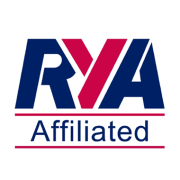
Whilst this is an area for our members, we do not hide behind logins and passwords, we welcome anyone looking for information on news, events and our documentation. Please feel free to look through this Members Area and see what we're getting up to. We would also be delighted for you to visit the club in person!
Contact Us if you wish to pay us a visit.

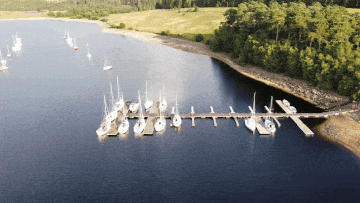

Our Kielder Yacht Club community, your home for all things KYC!
Pour yourself a brew, put your feet up and drop in regularly for our latest news, messages and what's happening. Thank you for being part of our club, but let us know your interests and suggestions so we can personalise your members area experience.
Matt Baker: Travels with Mum & Dad - Watch the Bakers visit Kielder Water (Including some great footage of the workings under the Dam) and have an out-of-this-world experience at the observatory. Catch it on Channel 4 catch up here
The freezer is freezing again! Unfortunately, the bosuns freezer was unplugged, it seems to use the socket for power tools, and the person who switched it off forgot to put it on again. Sadly, at great expense, all the food defrosted and had to be thrown out. There is no need to use these sockets, there are outside sockets situated on both sides of the clubhouse for use by members.
Free to use chargers are situated in the bosuns but there have been a couple of them, kindly donated by members, that have blown beyond repair. This is likely happened because the workbench is actually metal, so by placing the charging clips on the worktop when the charger is switched on will cause a short and may damage it beyond repair. So please be mindful when charging your batteries, keep the clip isolated or attached to the battery first before putting on the power.
Spaces are limited for each haul-out day, book asap so you are not disappointed. Failing to book your haul-out will mean you will not be removed from the water on scheduled days and if a crew can be assembled outside of these dates, which is not guaranteed, then you will incur a charge.
Further to the publicity achieved in Practical Boat Owner, the Hexham Courant both online and in print, Yachting Monthly has also published an edited version of our Big Regatta article that we submitted to the popular UK yachting magazine.
Our early bird haul-out on the 5th October has proved popular this year and unfortunately this crew assisted day is already fully booked. Please make sure you get your booking made as soon as possible to avoid any disappointment regarding your preferred haul-out day. Spaces currently available for 23-24th & 26-37th October at time of this message.
The Haul-out booking system is now live and you are now able to book your preferred day. Spaces are limited for each day so don't delay in filling out the form. You are required to read all documentation sent to you by the membership secretary, yes, it's a chore, but this is for yours and everyone's safety. Please get your trailers checked over ASAP and make sure your boat name is on your trailer, this is not optional. You'll also need to remove your mooring ropes and chains once out the water before the end of the last haul-out day, when the tenders will be removed from the lake, as you may not get the same mooring next season.
Please note the AGM scheduled for 9th November has had to be brought forward a week to Sat 2nd November. Apologies for any inconvenience caused.
We're seeking dedicated members to join our committee for the start of our 2025 sailing season. As a committee member, you'll have the opportunity to contribute to important decisions, share your ideas, and help shape the future of our club. We're looking for individuals who are enthusiastic, reliable, and have a strong commitment to our club's goals. Contact the Commodore, Club Secretary, Membership Secretary or any committee member for further information and how you can be nominated to join our group of volunteers that help run the club.
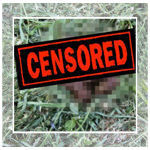
𝄞 P-P-P-PICKUP YOUR DOG POO 𝄞
Unfortunately, we are still finding dog poo around the site not being collected, even around the clubhouse picnic tables. Besides the health risks, especially to children, whilst it is obvious that getting muck on your feet is very annoying, inadvertently spreading it onto the clubhouse carpet or into a car or boat, would be exasperating. Dogs are most welcome, but must be kept on leads around site so owners should notice any occurrences.
Please do the right thing... pick it up every time.
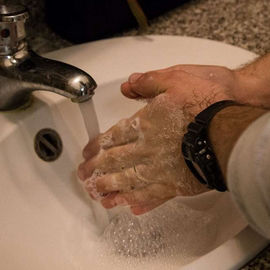
COVID... it's still circulating.
It's important to remember that COVID hasn't disappeared and the virus continues to circulate in our community. To protect yourself and others, please continue to practice good hygiene, such as washing your hands regularly, covering your mouth when coughing or sneezing, and stay away from the club when unwell. By taking these simple precautions, we can help to minimize the spread of the virus and keep KYC operating safely. Please contact the commodore or any committee member if you have contracted the virus and think you may have had it whilst visiting the club.
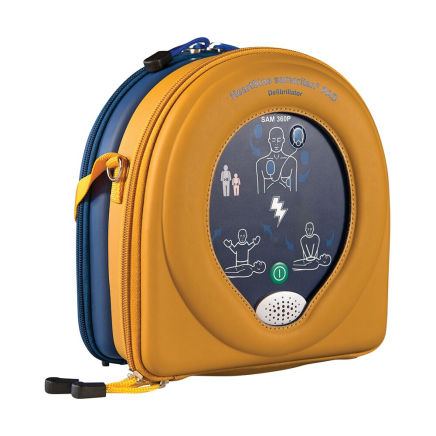
Defibrillator - We can all check
The club defibrillator will hopefully never be needed, but it does require a regular check to confirm it is in operating condition. Our defibrillator has a more detailed schedule of maintenance for batteries and pads but each member can simply glance at the unit to see if the Green Light is flashing which indicates it is in normal operation. It's no biggie and just takes a few seconds to inspect. Anything other than a green flashing light should be reported to a committee member immediately.

Latest Club Correspondence
Didn't receive the email? Let us know.
If you've changed your contact details and think you may have forgotten to tell us, drop us a line with your new details to ensure you get all our important communications.
"What’s a Boat Buddy?"
Think of a Boat Buddy as someone who can check out your boat when you are not there, just like a neighbour might with your house when you are not at home. Whilst there is an ethos of all members watching out for each other’s boats whether on the moorings or out of the water, why not get together with someone you particularly get on well with or a member who is moored next to you? When either of you next go out to your vessel, just have a quick check over to see if everything’s okay. There’s no need to mount the craft, just a quick look around on the tender to see if the mooring ropes and chain is good, sail covers are still in place, etc. etc.
Don't forget to exchange contact details and there's nothing to stop you getting 3 or 4 Buddy's in your group or being in multiple groups.
So get yourself a Boat Buddy, it can’t be a bad thing, can it?
We have noted from more than one member that they have not received certain emails from the club in the past.
Firstly, it's a good idea to review the 'Latest Club Correspondence' section above regularly. Emails to the membership are listed here so you may check you have received them. If you have not received an email, please contact us.
What may have happened?
Have you changed your email address and not notified the club or membership secretary?
Are the emails in your 'spam' folder?
Is KYC on your 'whitelist'?
What on earth are we talking about!!!?
A document has been created with some useful information surrounding these issues that will hopefully help. Open the Document...
Don't forget that KYC fees are not transferable between members. If you are selling your boat or tender, all fees are payable by the new owner no matter what time of year, in or out of season. The new member must also pay registration to NWL along with any associated mooring fees even if they have already been paid by you. Any temporary storage fees are also due following boat exchanges by everyone. Please tell the new owner to contact the club ASAP so we understand their circumstances even if they intend to remove the vessel.
IMPORTANT: Most importantly for security, you must not give your key(s) to the new member before or upon sale completion. All keys must be accounted for and the Membership Secretary collects and distributes keys.
It's great staying out on the lake overnight. Here is a map of the current locations that we are able to use (tap to open). Take all safety precautions when staying out overnight. Make sure you check the forecast, you are tied correctly to the moorings, you have provisions, a first aid box, your VHF and most importantly, leave a Trip Slip at the club.
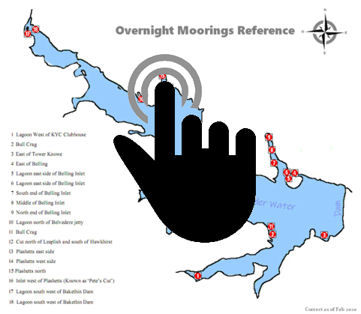
Cut down the development time with drag-and-drop website builder. Drop the blocks into the page, edit content inline and publish - no technical skills required.
Choose from the large selection pre-made blocks - full-screen intro, bootstrap carousel, slider, responsive image gallery with, parallax scrolling, sticky header and more.
Here, we retain a selection of the more important posts that you may have missed. These will be withdrawn when they are no longer pertinent, so visit the noticeboard regularly to catch noteworthy news, information or announcements that may affect you.
'Data Protection' and our club
Popups, GDPR, Data Protection... it can be very frustrating at times.
Protecting you as a member is of course extremely important and takes form in a variety of ways, but one area of confusion can often be protecting your personal information like email address, phone number and even your name! Data security is one of the areas the club is responsible for. We regularly get very innocent requests for member's contact information and this is something we can not simply give out, it requires a little patience from your side. Should you require another members details, our process is to ask that member if they are willing to divulge their information to you. Therefore, please understand we are not being awkward, the Data Protection Act is law and it may take a little time to get you the details you require.
Membership Records Update
The Hon. Membership Secretary is requesting by email any changes to your club membership records. It's important we keep our records up-to-date for any club communications.
Remember... "Trip out? Trip in."
There have been some memorable slogans conceived by advertisers and government campaigns over the years. Of course, you know their purpose is to get us to remember goods and services or to get over an important message, so why not have one of our own?
“Trip out? Trip in.” - So if you have a Trip out for a sail or a cruise, remember to always complete and deploy your Trip Slip in the rack, even for the shortest of journeys.
Okay, it's not as catchy as 'Clunk Click Every Trip' but hopefully it can serve as a reminder to post your Trip Slip for every voyage. Just as important, remember to remove your Trip Slip on your return so everyone knows you have arrived back safely.
Important Information Regarding Fraudulent Emails.
Recently, it has been reported that some members are getting emails from last seasons commodore requesting financial help. These emails are fraudulent and are not from anyone connected to the club. The more observant will note that the email address they are sent from is similar to our previous commodore's, but not exactly the same. Regardless of this, it is very important you do not reply or click on any links or attachments, simply delete the email. On a side note, it is always advisable to keep your device software along with virus and malware applications fully up to date.
7th Christmas Party and Annual Walk
2nd Annual General Meeting, inc. buffet lunch ✔
5th Early Bird Haul Out ✔
23rd-24th Midweek Haul Out ✔
26th-27th Weekend Haul Out ✔
21st KYC Racing Series - Race 6 (Rescheduled)
22nd KYC Racing Series - Race 7 (Rescheduled)
28th KYC Racing Series - Race 6 ✔
28th ‘Out with a Bang’ bangers & mash social evening ✔
29th KYC Racing Series - Race 7 (Sorry, cancelled) x
3rd KYC Racing Series - Race 4 ✔
4th KYC Racing Series - Race 5 ✔
Regatta Weekend
23rd-25th
Friday - Cheese & Wine social evening
✔
Saturday - Fun Sailing Event, inc Motor Cruisers, + BBQ
✔
Sunday - Best Dressed Boat competition, Discover Sailing Open Day ✔
6th Pie & Peas social evening ✔
13th Commodore's Chase & sailors supper, motor cruisers & yachts ✔
14th KYC Racing Series - Race 3, female skippers ✔
20th Flotilla (Kielder Big Regatta joint clubs event), motor cruisers & yachts ✔
1st Italian Night social evening - Booking Required ✔KYC Racing Series - Race 2 (Sorry, cancelled) x
2nd Cruise in Company inc. Commodore’s Picnic, motor cruisers & yachts ✔
4th Mince & Dumpling social evening ✔
5th-6th Dam to Dam joint sailing event with the Kielder Water Sailing Club ✔
11th Belling Bell Trophy Race, inc. motor cruisers & Astronomy Night! ✔
12th KYC Racing Series - Race 1 ✔
6th-7th(am) Launch Weekend ✔
10th-11th Midweek Launch ✔
20th Late Launch ✔
21st Volunteer Working Day ✔
9th-12th “Men's Shed” Maintenance Working Group
(All Welcome) ✔
Club documentation paints a clear picture of the club's purpose, values, expectations and rules. Reading it allows you to assess if the club aligns with your interests, needs, and preferences before committing to becoming a member each season, as KYC and NWL rules may be amended now and again. Being aware of these details upfront prevents potential surprises to you as a member and ensures you're comfortable with the club's culture and expectations. Information like dogs on-site, fishing, campervans, type of craft permitted, day sailing etc. to name a few of the most common questions raised are addressed in these documents.
We understand that reading through pages of information is not most people's cup of tea but before your journey begins, we want to emphasise the importance of carefully reviewing each document. They contain vital details that will ensure a smooth and successful experience with KYC, so it is very important you read them as they'll help you make an informed choice of whether the club is still suitable for you or not.
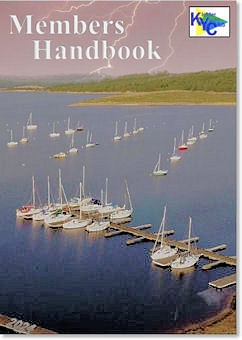
Membership guidance on how the club functions, what services are provided and what is expected of members..
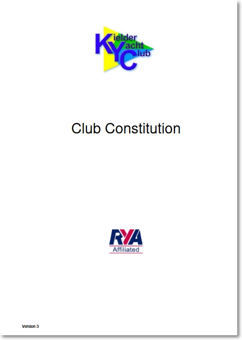
Documentation outlining the purpose of the club and the duties of the club's officers along with membership definitions, club management and meeting details.

Northumbrian Water Ltd rules and regulations governing the use of Kielder Water.
(Last Updated by NWL 2021)
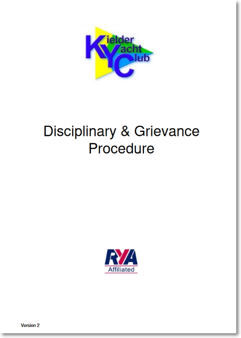
Documentation describing standards of conduct and promoting fair treatment for all.
Summary sheet outlining the current fees payable to KYC for core payments required and detailed extras
Instructions on how to pay your NWL registration and mooring fees using their online payment system
Calling for assistance:
Channel 16 (known as the calling channel) is used for emergencies only. Always ensure your radio is working before you take to the water, or for handhelds, the batteries are good and you have spares. Where possible, make sure as many crew and passengers know how to at least use the basic radio controls. Gain familiarity with Kielder Water and practice learning the locations and landmarks of the lake. You can find maps in the club house and you may find the Overnight Moorings Map useful for generalised locations. Invest in a paper map for your vessel, technology is not that friendly without power. You can also purchase Mayday cards that could be placed in your cockpit for reminders on how to call for help, or even make your own... why not? ALWAYS leave a Trip Slip at the jetty entrance informing others of your intended journey and return times. For advice on calling for help, take a look at this RYA link.
Talk Talk:
It's amazing how commonly our newer or less experienced sailors and cruisers praise the wisdom and guidance of our more experienced members. Whilst books and manuals are a good way to learn, there's nothing like asking someone in person and we certainly excel as a club in helping each other with those simple or tricky questions. We have such a diverse skill set and knowledge of sailing and boating, so please don't be afraid to ask someone if you need help or advice.
Fill 'er up:
Getting into the habit of having enough fuel for your intended trip may be an obvious one, and if you can't sail for whatever reason, make sure you can get back to base on your engine alone. Sure, but what about using a tender? Make sure the tender fuel tank/container is adequately full for any journeys to and from your mooring. It's not the first time a member has ran out of fuel and had to row to shore! If the club tender fuel container is getting low, follow etiquette and replenish the fuel from the bosun's supply.
Look cool:
There are a couple of handy basic pieces of cheap gear that not everyone takes on board... a cap and sunglasses. It's not uncommon to get terrific glare from the water, restricting your view, especially when coming in to our Whickhope jetty in the evening, when the sun is often in your line of sight.
Watch where you're going:
Binoculars are useful in a number of situations of course, but they can be handy to take a good look at the jetty when cruising back to base. Check for available spaces before you get too close to the landing and end up having to make an awkward last minute manoeuvre. Knowing where you are docking can also give you time to place fenders and ropes on the correct side of the boat before you get there. Don't forget to check the wind direction before you commit too.
Get plastered before you sail:
Well, when we say plastered, we mean of the first aid variety of course. Next time you rummage around your cockpit make sure you know where your first aid kit is and let any crew or passengers know, making sure it is fully supplied with unexpired stock.
No Soggy Bottoms please:
Extra clothes for changing conditions and temperature drops may be obvious, but what if you get very wet? Always have a full change of clothes in your car as well as perhaps your boat. Your bottom and car seat will thank you on your journey home.
Be a meerkat:
Always maintain concentration to avoid colliding with other boats. Other vessels, obstacles or even the shore can creep up on you in a jiffy, so don't assume that as you can't see anything now, that you can relax and take your eye off the surrounding area for a while.
Pain is not gain:
Some of us are not as young as we used to be…. you know who you are!
A gentle stretch and limber up before heading out on the water isn’t such a silly idea whatever your age and fitness. A pulled muscle starting an outboard, hoisting up the mainsail or bending down to grab a pickup buoy could potentially cause more problems than it first seems, especially if you are sailing alone. Firstly, know and consider your limitations, but examples depending on your flexibility and capability may include marching in place while swinging your arms, slow and smooth shoulder shrugs or rising on your toes. Probably, doing a warm up on shore would be advisable, as you may be swimming too should you try these onboard!
Got any tips to share?
kielderyachtclub@email.com
I'm currently looking at quotes for my yacht insurance. What on earth is maximum hull design speed in knots?
Maximum hull speed is a calculation to predict the maximum speed of a yacht based solely on its waterline length. Maximum is not really a correct term here as this speed can be exceeded, but for the purposes of your insurance the formula to calculate your answer is:
Maximum Hull Speed in Knots = 1.34 x Square root of the waterline length in feet.
Fortunately, insurance companies tend to offer a range of selectable options when answering this question, for example, 20 knots or less, or more than 20 knots, so it's unlikely your calculation needs to be very accurate.
Buying a lifejacket is a minefield. Any advice?
Lifejacket styles and features are wide and varied these days and it's a common topic of discussion when trying to select one suitable for your needs. This will not be a 'purchase and forget' item, maintenance and servicing should be considered, so it's not just a case of picking a nice colour that matches your deck shoes.
Here's some great advice about lifejackets on the RNLI site. Go there...
Got any questions for this section?
kielderyachtclub@email.com
Windward – Term which denotes the direction from which the wind is blowing.
Leeward – Direction opposite to the current wind; sometimes called ‘lee’ as well.
Tacking – A basic manoeuvre of turning the bow into the wind, which changes the direction from which the wind blows from one side of the boat to the other. This will also shift the boom of the boat from one side to the other in a more controlled fashion.
Gybing – The opposite of tacking, but not as common as it involves turning the boat directly into the wind. The manoeuvre consists of turning the boat’s stern through the wind, which changes the direction of the wind from one side of the boat to the other.
WARNING! Gybing without preparation can be dangerous. Unlike tacking, gybes require very careful control of the mainsheet as the boom, mainsail and the slack mainsheet can slam across the boat very quickly. Anyone near the boom or mainsheet runs the risk of being hit and seriously injured or worse. This is why you should always take special care with good communication to the crew and passengers when gybing.
Sailing a boat can be an incredibly rewarding experience, but it's crucial to learn the basics before heading out on your own. Here's a general overview of the process, but always prioritise safety and consider taking a sailing course for in-depth knowledge and practical skills:
Before you set sail:
1. Know your boat: Familiarise yourself with the different parts of the boat, their functions, and how to handle them. Learn basic sailing vocabulary related to wind direction, points of sail, and boat components.
2. Plan your trip: Check weather conditions and potential navigational hazards. Plan your route based on your experience and the capabilities of your boat. Secure necessary safety equipment like life jackets, flares, and a first-aid kit.
3. Rig the sails: Learn how to raise and adjust the sails for different wind conditions. This involves using halyards, sheets, and other lines to control the sail shape and angle.
While sailing:
1. Steering: Understand how to steer the boat using the tiller or wheel. Learn how to turn, maintain course, and manoeuvre in different wind conditions.
2. Trimming the sails: Adjust the sails based on wind direction and strength to optimize propulsion and stability. This involves easing or tightening the sheets to control the sail shape and angle.
3. Points of sail: Understand the different angles you can sail relative to the wind: close haul, reach, broad reach, and running. Each point requires different sail trim and steering techniques.
4. Manoeuvring: Learn basic manoeuvres like tacking (changing direction by turning into the wind), jibing (changing direction by turning away from the wind), and reefing (reducing sail area in strong winds).
Additional resources:
• Sailing schools and organisations: Consider taking a sailing course from a reputable organisation like the Royal Yachting Association (RYA).
• Sailing books and online tutorials: Numerous resources can provide detailed information and visual guides on sailing techniques. Ask our members for advice, they are a friendly and very experienced sailors knowing the characteristics of the lake.
Remember, safety is paramount while sailing. Always prioritise weather conditions, wear a life jacket, and be aware of your surroundings. Start with calm conditions and gradually build your experience before venturing out in challenging situations.
Abeam Off to the side of a vessel at right angles to the boat’s centerline
Aboard On or in the boat
Anchor A device used to hold a boat to the sea bottom
Aft At, near or towards the stern
Apparent Wind The wind that flows over a moving boat, which is a result of the “true wind” affected by the movement of the boat
Appendage An underwater fin such as a centerboard dagger board, t\leeboard or rudder
Astern Behind the boat
Backing Pushing out a sail so that the wind fills it from the opposite side. Used to slow a boat or turn the bow away away from the wind when in irons; back winding – a sail backwinds with the wind funneling on the wrong side
Bailer A device used to remove water from the boat. A bailer is required equipment for a Sabot
Batten Thin fiberglass or wood slats that are inserted in the leech (outside) of the sail for added support
Beam Maximum width of a boat; beam reach – sailing at approximately 90 degrees to the wind with the wind coming from abeam and the sails eased about half way
Beat Advance to windward on alternate tacks; beating – to sail to windward, close-hauled, tacking to make way to windward
Bitter end End of a line
Block A pulley that is encased in its own housing. A block will help to add purchase when pulling on a line. It is important to use the correct size line with the blocks on your boat
Bolt rope Sewn around luff and foot of sails to give added strength to sail where it attaches to mast or boom
Boom Horizontal spar that supports the foot (bottom) of the sail. Named for the sound it makes when it hits someone’s head
Boom Vang A line that runs from the boom to the base of the mast. The vang helps keep the boom down and tighten the back (leech) of the sail
Bow The forward part of a boat, the pointy end.
Bow Line Also known as a painter. The bow line is used to tie the boat to the dock or to a tow line. Minimum 10 foot bowline is required equipment. Best if at least ¼” in diameter
Broad Reach Sailing with the wind coming over the rear corner of the boat (quarter), or with the bow approximately 120-160 degrees from the source (eye) of the wind
By-the-lee Running with the wind on the same side as the boom, increasing the possibility of an accidental jibe
Burgee A flag, often triangular, that serves as the unique emblem for each yacht club
Capsize A boat turned over on its side or upside down (turtled)
Cast off To untie a line and let it go, or remove a line from a cleat and let it go
Catamaran A boat with two parallel hulls
Centerboard A thin, wide blade going down through the bottom of the hull in the center of the boat. This blade helps to keep the boat from going sideways in the water. It serves the same purpose as a leeboard or a dagger board
Center of Effort Center of sail area, the focal point of the forces generated by the sail area
Center of lateral resistance Center of underwater hull profile, the focal point of the forces generated by the underwater foils
Cleat A fitting where a line can be secured
Clew The aft lower corner of the sail is the clew. It is where the foot and the leech of the sail meet
Close-hauled Sailing as close to the wind as possible
Close reach Sailing with the wind forward of the beam, or with the bow approximately 60 degrees from the eye of the wind
Clove Hitch Similar to two half hitch knot. Most often used to hang fenders over side of boat for protection
Course The direction a boat is steered to reach a destination; or the compass heading; or the angle a boat is sailing relative to the wind
Crew The people who help the helmsperson sail a boat
Cockpit Open part of boat
Cunningham A control line used to tension the forward edge (luff) of a sail, similar to a downhaul
Dagger board Foil raised and lowered vertically used to reduce leeway, different from centerboard which is pivoted instead of raised
Dinghy An open boat, or one partially decked over without a cabin
Dolly A lightweight trailer that is used to move boats from their storage rack to the launch dock
Duct Tape A heavy duty, usually gray tape that will fix almost anything at least temporarily. You can never have enough
Ease To slack a line or sail, ie. To “sheet” out
Eye of the Wind From the source of the wind; directly into the direction from which the wind is blowing from, the no-sail- zone
Fairlead Block or fitting used to change the direction of a running line such a jib sheet.
Feathering Sailing upwind so close to the wind that the forward edge of the sail is stalling or luffing, slightly thusreducing the power generated by the sail and the angle of heel without stalling completely
Fenders Cushions to reduce the chafe between a boat and the dock or other boats
Fiberglass Most modern boats are made of fiberglass. It is a woven material impregnated with a liquid resin that is very stiff when the resin dries
Figure 8 knot Stopper knot in the shape of an “8” used for the end of a line to prevent it from passing through a fairlead or eye
Fleet For racing purposes, sailors are grouped in fleets according to experience. The Sabot “A” fleet is the more advanced group, with B, C and C3 fleets being progressively more basic
Foot The bottom edge of the sail between the tack (front corner) and the clew (back corner)
Forestay Forward support of mast, usually wire lead from bow to mast, part of the standing rigging
Give way The boat which must alter course to avoid another boat, the burdened boat in the Rules of the Road
Gooseneck A hinged fitting on the mast that connects the mast to the boom
Grommet A metal ring in a sail that allows lines to be connected through or to the sail. Both the clew and the tack have grommets
Gudgeon A “U” shaped fitting on the back of a boat used to connect the rudder to the hull. Most sailing dinghies have two gudgeons.
Halyards Lines that are attached to the head of a sail and used to hoist sails up the mast
Head The top of the sail
Header A wind direction change “shift” that brings the wind closer to the bow
Heading The direction the boat is travelling at any given moment
Head Up Turn the bow of the boat toward the wind
Heel To lean a boat over, generally away from the wind
Helm 1) the tiller; 2) the tendency of a boat to turn toward the wind (weather helm) or away from the wind (lee helm)
Helmsperson The person who steers a boat, ie. skipper
Hiking Out The action of hanging over the side of the boat in order to keep the boat flat on the water
Hiking Boots Special boots made of thick rubber that protect and support a sailor’s ankles when using the hiking strap to hike out
Hiking Strap A strap, usually stiff, sometimes padded for comfort, attached to the bottom of the cockpit under which a sailor places his/her feet in order to hold the sailor in the boat while hiking out
Hull The actual body of the boat
INSA International Naples Sabot Association. This is the class association for the Sabot. All Sabot racing fleet members must join
In irons A boat head to wind with all sails luffing and no maneuverability
Inspection Port A hole in the hull of the boat that allows the skipper to reach inside the hull to make repairs, or sponge out water
Jib The front sail on boats with two or more sails. It is small and triangular in shape
Jibe (Gybe) Turning the boat away from the wind so the stern passes through the wind and the sail(s) switches sides
Laser A popular 14 ft. high performance single hand boat. Used in the Olympics for men’s and womens single hand event
Lee The area sheltered from the wind, downwind; leeward (pronounced loo-ward) – the direction away from the wind, the side of the boat opposite the windward side
Leech The aft edge of the sail. The leech connects the head and the clew of the sail
Life jacket A jacket type device that provides flotation when sailors are in the water
Luff or Luffing 1) The forward edge of the sail nearest the mast, between the tack and the head of the sail; 2) when asail is waving back and forth as the sail is “eased” out too much or the boat is heading into the wind, thesail is said to be luffing, like a flag flying in the breeze. 3) when the boat turns its bow toward the wind the boat is said to be luffing
Mainsheet The line attached to the boom that controls the Mainsail in and out
Mast The vertical spar that supports the sail
Mast blocks Small pieces of wood or plastic used to support the mast in a forward or aft position
Mast Tube A tube on a Sabot that the mast fits into and supports the mast
One-design Any class of boat that has specific requirements for size and shape of hulls, sails and equipment to keep them equal, ie. Sabots, FJ’s and Lasers
Outhaul A line attached to the clew of the mainsail and used to stretch the sail out along the boom. The outhaul controls the “depth” of the sail
Paddle A small board or device used to move the boat in case of emergency or lack of wind. Paddle is required equipment on Sabots and many small boats
Pintles The pins on the rudder that are inserted into the gudgeons on the transom of the boat to connect the rudder to the hull
Planing When a boat accelerates enough to break loose from its bow wave and ride on top of the water
Port Refers to the left side of the boat as well as to which tack a boat is on. If a boat is on “port tack” the wind is coming over the left side of the boat
Ratchet Block These are special blocks that rotate in only one direction. They grip the line passing through the ratchet block, relieving some of the “pull” on that line
Reach Sail with the wind over the side. i.e A Beam reach is the wind approx. 90 degrees from the bow, broad reach 130-170 degrees from the bow, or close reach with the wind 55-80 from the bow
Rudder The movable, underwater blade on the transom of the boat used for steering.
Run Sail downwind, with the wind aft or nearly so, ie. Sailing with the wind
Sabot A popular one person sailing dinghy used mainly in Southern California. They are 8 ft. long and weigh about 100 lbs.
Sail The part of the boat’s equipment which is usually made from cloth and which is attached to the mast and is the boat’s primary reason for movement
Sailing Instructions At each regatta, these are made available to all competitors. They tell the sailors important information about the schedule for the day, starting order, courses to be sailed, etc.
Sea breeze Wind from the ocean caused by warm air rising over the land and the cool ocean wind replacing it
Shackle A U shaped metal ring with a pin to close the “U”. It is used to connect objects together, such as connecting the jib halyard to the head (top) of the jib
Sheets All lines on a boat which are used to control the in and out motion of sail
S-Hook A stainless steel “S” shaped hook used on the end of many control lines that allows for quick hook up and disconnect
Shrouds Wires that hold the mast to the sides of the boat and support the power of the sails. Part of the standing rigging
Skipper The person in charge of the boat, usually the person steering the boat
Skippers Meeting All regattas begin with a Skippers Meeting. The meeting reviews the Sailing Instructions, special rules and to answer questions. Check Notice of Race (NOR) or Sailing Instructions to determine the time and place
Stand on To hold course, the privileged boat in the Rules of the Road
Starboard Refers to the right side of the boat. A boat is on a “starboard tack” when the wind is on its starboard side (coming over the right side of the boat)
Stern Aft (back) end of a boat
Stopper knot A knot on the end of a line to prevent it from passing through a block, like the Figure 8 knot
Tack 1) If a boat’s bow passes through the eye of the wind, then it is said to be tacking. 2) The direction the boat is sailing (see starboard and port). 3) The lower front corner of the sail where the luff and the foot of the sail meet
Telltales Small lengths of lightweight material attached to the sail near the luff or batten pockets of main sail to indicate the airflow over the sail
Thwart A structural board in the center of a Sabot. Juniors should sit next to the thwart when sailing
Tiller The long piece of wood that is connected to the top of the rudder. It changes the boat’s direction when
moved from side to side.
Tiller Extension A hinged extension attached to the tiller that allows the skipper to steer the boat while sitting forward or hiking out. This is standard equipment for all boats in the program
Transom The very back edge of the boat is called the transom. It is where the name of the boat is often painted
Traveler A line or track that controls sideways movement of the boom and mainsail.
Trim 1)Pulling or “sheeting” in a sail. 2)Fore and aft balance of a boat or 3)can be used to refer to the adjustment of sails to take the best advantage of the wind
True wind The speed and direction of the wind felt by a stationary object
Turtle, turn turtle When a vessel is capsized and completely inverted so that its hull is above the water and its mast is submerged
Weather Toward the wind
Windward The general direction the wind is coming from
Wing and wing Running before the wind with the main sail and jib on opposite sides of the boat
Phew, got all that!
Now and again we'll pick out some articles from external sources that may be of interest. Some are older and go back a while but are still useful. The links are provided as a convenience and will open another browser window. They do not constitute an endorsement or an approval by Kielder Yacht Club of any services or opinions of the corporation or organisation. All rights reserved.